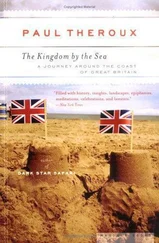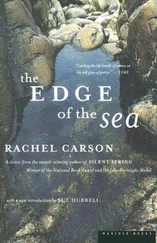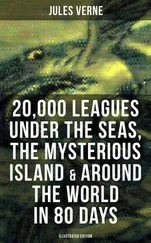Wherever great oil fields are found, they are related to past or present seas. This is true of the inland fields as well as of those near the present seacoast. The great quantities of oil that have been obtained from the Oklahoma fields, for example, were trapped in spaces within sedimentary rocks laid down under seas that invaded this part of North America in Paleozoic time.
The search for petroleum has also led geologists repeatedly to those ‘unstable belts, covered much of the time by shallow seas, which lie around the margins of the main continental platforms, between them and the great oceanic deeps.’
An example of such a depressed segment of crust lying between continental masses is the one between Europe and the Near East, occupied in part by the Persian Gulf, the Red, Black, and Caspian seas, and the Mediterranean Sea. The Gulf of Mexico and the Caribbean Sea lie in another basin or shallow sea between the Americas. A shallow, island-studded sea lies between the continents of Asia and Australia. Lastly, there is the nearly landlocked sea of the Arctic. In past ages all of these areas have been alternately raised and depressed, belonging at one time to the land, at another to the encroaching sea. During their periods of submersion they have received thick deposits of sediments, and in their waters a rich marine fauna has lived, died, and drifted down into the soft sediment carpet.
There are vast oil deposits in all these areas. In the Near East are the great fields of Saudi Arabia, Iran, and Iraq. The shallow depression between Asia and Australia yields the oil of Java, Sumatra, Borneo, and New Guinea. The American mediterranean is the center of oil production in the Western Hemisphere—half the proved resources of the United States come from the northern shore of the Gulf of Mexico, and Colombia, Venezuela, and Mexico have rich oil fields along the western and southern margins of the Gulf. The Arctic is one of the unproved frontiers of the petroleum industry, but oil seepages in northern Alaska, on islands north of the Canadian mainland, and along the Arctic coast of Siberia hint that this land recently raised from the sea may be one of the great oil fields of the future.
In recent years, the speculations of petroleum geologists have been focused in a new direction—under sea. By no means all of the land resources of petroleum have been discovered, but probably the richest and most easily worked fields are being tapped, and their possible production is known. The ancient seas gave us the oil that is now being drawn out of the earth. Can the ocean today be induced to give up some of the oil that must be trapped in sedimentary rocks under its floor, covered by water scores or hundreds of fathoms deep?
Oil is already being produced from offshore wells, on the continental shelf. Off California, Texas, and Louisiana, oil companies have drilled into the sediments of the shelf and are obtaining oil. In the United States the most active exploration has been centered in the Gulf of Mexico. Judging from its geologic history, this area has rich promise. For eons of time it was either dry land or a very shallow sea basin, receiving the sediments that washed into it from high lands to the north. Finally, about the middle of the Cretaceous period, the floor of the Gulf began to sink under the load of sediments and in time it acquired its present deep central basin.
By geophysical exploration, we can see that the layers of sedimentary rock underlying the coastal plain tilt steeply downward and pass under the broad continental shelf of the Gulf. Down in the layers deposited in the Jurassic period is a thick salt bed of enormous extent, probably formed when this part of the earth was hot and dry, a place of shrinking seas and encroaching deserts. In Louisiana and Texas, and also, it now appears, out in the Gulf itself, extraordinary features known as salt domes are associated with this deposit. These are fingerlike plugs of salt, usually less than a mile across, pushing up from the deep layer toward the earth’s surface. They have been described by geologists as ‘driven up through 5000 to 15,000 feet of sediments by earth pressures, like nails through a board.’ In the states bordering the Gulf such structures have often been associated with oil. It seems probable that on the continental shelf, also, the salt domes may mark large oil deposits.
In exploring the Gulf for oil, therefore, geologists search for the salt domes where the larger oil fields are likely to lie. They use an instrument known as a magnetometer, which measures the variations in magnetic intensity brought about by the salt domes. Gravity meters also help locate the domes by measuring the variation in gravity near them, the specific gravity of salt being less than that of the surrounding sediments. The actual location and outline of the dome are discovered by seismographic exploration, which traces the inclination of the rock strata by recording the reflection of sound waves produced by dynamite explosions. These methods of exploration have been used on land for some years, but only since about 1945 have they been adapted to use in off-shore Gulf waters. The magnetometer has been so improved that it will map continuously while being towed behind a boat or carried in or suspended from a plane. A gravity meter can now be lowered rapidly to the bottom and readings made by remote control. (Once an operator had to descend with it in a diving bell.) Seismic crews may shoot off their dynamite charges and make continuous recordings while their boats are under way.
Despite all these improvements which allow exploration to proceed rapidly, it is no simple matter to obtain oil from undersea fields. Prospecting must be followed by the leasing of potential oil-producing areas, and then by drilling to see whether oil is actually there. Offshore drilling platforms rest on piles that must be driven as far as 250 feet into the floor of the Gulf to withstand the force of waves, especially during the season for hurricanes. Winds, storm waves, fogs, the corrosive gnawing of sea water upon metal structures—all these are hazards that must be faced and overcome. Yet the technical difficulties of far more extensive offshore operations than any now attempted do not discourage specialists in petroleum engineering.
So our search for mineral wealth often leads us back to the seas of ancient times—to the oil pressed from the bodies of fishes, seaweeds, and other forms of plant and animal life and then stored away in ancient rocks; to the rich brines hidden in subterranean pools where the fossil water of old seas still remains; to the layers of salts that are the mineral substances of those old seas laid down as a covering mantle over the continents. Perhaps in time, as we learn the chemical secrets of the corals and sponges and diatoms, we shall depend less on the stored wealth of prehistoric seas and shall go more and more directly to the ocean and the rocks now forming under its shallow waters.
A sea from which birds travel not within a year, so vast it is and fearful.
HOMER
TO THE ANCIENT GREEKS the ocean was an endless stream that flowed forever around the border of the world, ceaselessly turning upon itself like a wheel, the end of earth, the beginning of heaven. This ocean was boundless; it was infinite. If a person were to venture far out upon it—were such a course thinkable—he would pass through gathering darkness and obscuring fog and would come at last to a dreadful and chaotic blending of sea and sky, a place where whirlpools and yawning abysses waited to draw the traveler down into a dark world from which there was no return.
These ideas are found, in varying form, in much of the literature of the ten centuries before the Christian era, and in later years they keep recurring even through the greater part of the Middle Ages. To the Greeks the familiar Mediterranean was The Sea. Outside, bathing the periphery of the land world, was Oceanus. Perhaps somewhere in its uttermost expanse was the home of the gods and of departed spirits, the Elysian fields. So we meet the ideas of unattainable continents or of beautiful islands in the distant ocean, confusedly mingled with references to a bottomless gulf at the edge of the world—but always around the disc of the habitable world was the vast ocean, encircling all.
Читать дальше












